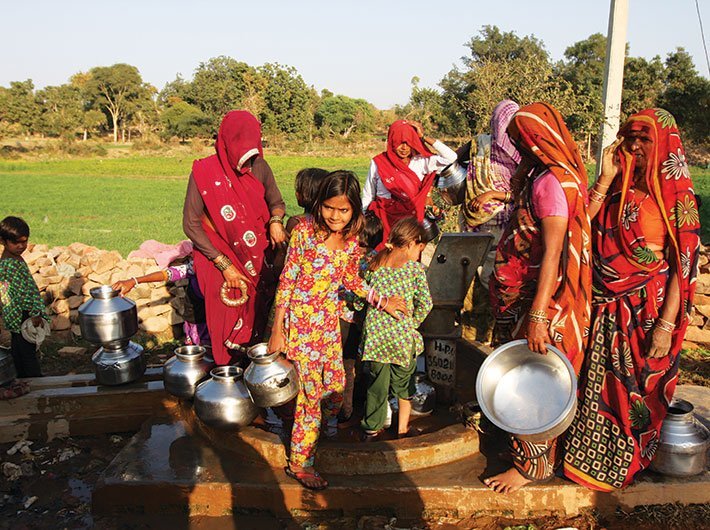Due to high temporal and spatial variation of precipitation, the water availability of many regions is much below the national average and can be considered as water stressed/water scarce
The average annual per capita water availability in the years 2001 and 2011 was assessed as 1,820 cubic meters and 1,545 cubic meters respectively which may reduce further to 1341 and 1140 in year 2025 and 2050 respectively, said union minister Sanjeev Kumar Balyan in a written reply in the Lok Sabha.
India is home to more than 17% of world’s human population and 17.5% of world’s cattle population with only 2.4% of world surface area and 4% of fresh water resources of world. Annual per-capita water availability of less than 1,700 cubic meters is considered as water stressed condition, whereas annual per- capita water availability below 1,000 cubic meters is considered as a water scarcity condition.
Read: Water scarcity: It’s the crop pattern
The minister said due to high temporal and spatial variation of precipitation, the water availability of many region of the country is much below the national average and can be considered as water stressed/water scarce.
He said that the average annual water availability of any region or country is largely dependent upon hydrometeorological and geological factors and is generally constant. As per National Commission on Integrated Water Resources Development (NCIWRD) report, the total water availability of India received through precipitation is about 4,000 billion cubic meter (BCM) per annum. After evaporation, 1,869 BCM water is available as natural runoff. Due to topographical and other factors, the utilizable water availability is limited to 1,123 BCM per annum, comprising of 690 BCM of surface water and 433 BCM of replenishable ground water. However, water available per person is dependent on population of the country and for India, water availability per capita is reducing progressively due to increase in population.
Read: Water shortage to impact economic growth: World Bank
The minister said a National Perspective Plan (NPP) envisaging inter-basin transfer of water has been formulated by the ministry to improve water security in the country. The implementation of NPP would provide 35 million hectare of additional irrigation potential, 34,000 mega-watts (MW) hydro power generation, flood moderation, navigation, drinking and industrial water supply, fisheries, salinity and pollution control etc. Central Ground Water Board, under this Ministry has prepared a conceptual document entitled “Master Plan for Artificial Recharge to Ground Water in India” during the year 2013 envisaging construction of 1.11 crore Rainwater Harvesting and Artificial Recharge structures in the country to harness 85 BCM (Billion Cubic Meters) of water.
Read: A calamity bigger than drought
The augmented ground water resources will enhance the availability of water for drinking, domestic, industrial and irrigation purposes. The master plan has been circulated to all state governments for implementation. The central government has launched the National Water Mission with the objective of conservation of water, minimizing wastage and ensuring its more equitable distribution both across and within States through integrated water resources development and management.
